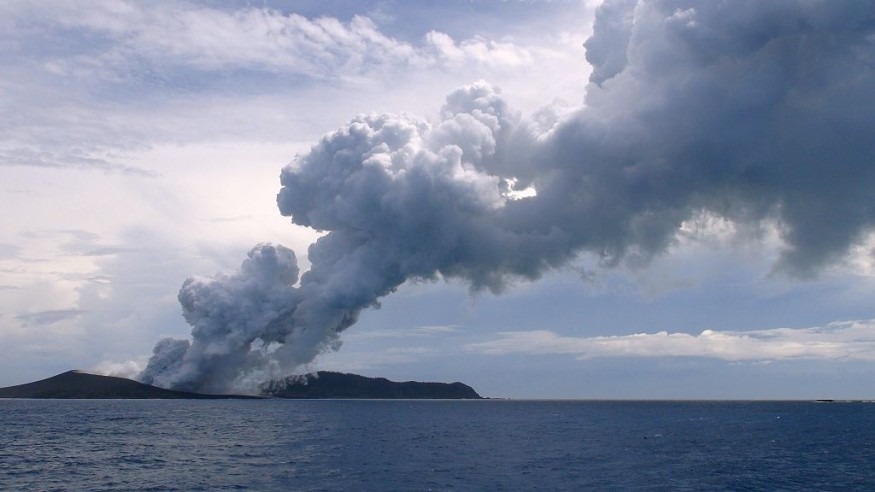The massive Hunga undersea volcano in the South Pacific Ocean erupted on January 15, 2022, devastating the island country of Tonga and causing a variety of atmospheric wave types, including booms heard 6,200 miles (10,000 km) distant in Alaska. It also triggered an unprecedented tsunami-like disturbance in the atmosphere, which arrived on the Pacific coasts before the real tsunami.

These are only a few of the findings of 76 experts from 17 countries that studied the eruption's air waves, which are the greatest known from a volcano since the 1883 Krakatoa eruption. The team's study was published in the journal Science on May 12, 2022, rapidly due to high scientific interest in the eruption.
Intensive Research
The research paper's primary author is David Fee, the Wilson Alaska Technical Center director at the University of Alaska Fairbanks Geophysical Institute. Four of the center's scientists are collaborating on the study.
The Hunga eruption in Tonga has revealed previously unknown details about the behavior of some atmospheric waves. The data was compiled using a dense network of barometers, infrared sensors, and seismometers managed by the Geophysical Institute's Wilson Alaska Technical Center, Alaska Volcano Observatory, and Alaska Earthquake Center in Alaska.
"By understanding the air waves from this eruption, we expect to be better equipped to monitor volcanic eruptions and tsunamis," said Fee, the coordinating scientist at the Geophysical Institute's component of the Alaska Volcano Observatory.
"The atmospheric waves were caught globally across a wide frequency spectrum. We will learn more about acoustic and atmospheric wave formation, propagation, and recording by examining this unique dataset," he added. "This has ramifications for monitoring nuclear explosions, volcanoes, earthquakes, and several other occurrences," says the author.
Lamb Wave
The nature of the eruption's Lamb wave, named after its discoverer, English mathematician Horace Lamb, was particularly intriguing to the researchers.
Lamb waves are created by the greatest atmospheric explosions, such as volcanic eruptions and nuclear testing. They can last anywhere from a few minutes and several hours.
A Lamb wave is a sort of guided wave that travels parallel to the surface of a material and extends upward. The surge from the Hunga eruption went along Earth's surface and circled the globe four times in one direction and three times in the opposite direction, similar to the Krakatau eruption of 1883.
"Lamb waves are uncommon. "We only have a few good observations of them," Fee added. "We can better comprehend the genesis and eruption by studying the Lamb wave." It's connected to the tsunami and volcanic plume creation and the eruption's higher-frequency infrasound and acoustic waves."
Near Hunga, the Lamb wave had at least two pulses; the first had a seven- to ten-minute pressure surge, a second, bigger compression, and a protracted pressure decline.
According to data from ground-based monitors, the wave also entered the ionosphere, soaring at 700 mph to nearly 280 miles.
Critical Difference

According to the report, a critical difference between the Lamb wave of the Hunga explosion and the 1883 wave is the amount of data obtained due to more than a century of technological innovation and the spread of sensors worldwide.
Other observations of the eruption's atmospheric waves included "amazing" long-range infrasound - noises too low in frequency to be heard by humans. Infrasound appeared after the Lamb wave, followed by audible noises in certain areas.
The publication reports that audible sounds traveled 6,200 kilometers to Alaska, where they were heard as repeated booms nine hours after the explosion.
"I heard the sounds but didn't assume it was from a volcanic explosion in the South Pacific at the time," Fee explained.
Farthest Report
The Alaska reports are the farthest known accounts of hearing sound. The report attributes this to global population growth and developments in societal connection.
"We'll be investigating these signals for years to figure out how the air waves were formed and spread so far," Fee added.
Related Article : Long Quiet Volcano Showed Activity As Alaska Cruise Season Begins
For similar news, don't forget to follow Nature World News!
© 2026 NatureWorldNews.com All rights reserved. Do not reproduce without permission.





